Here is a step-by-step for making brown butter. It's so easy, and the results are fantastic! You get butter with a deep, nutty, toasty flavor unlike anything else. Great for substituting regular butter in baking recipes and some savory ones.
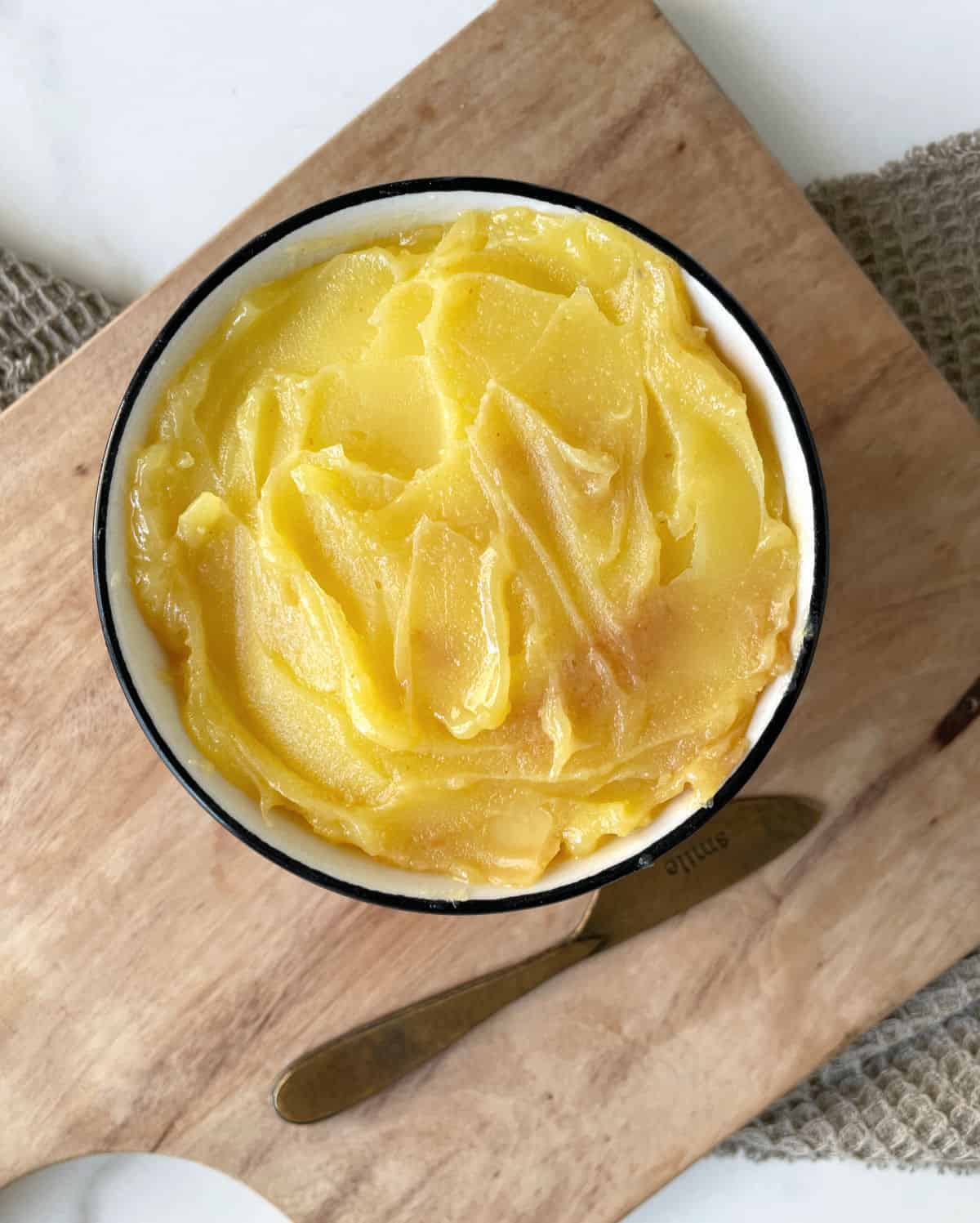
What is brown butter?
The short version is what the name implies: butter that is browned.
Also known as the French beurre noisette (translates as hazelnut butter), it's butter (salted or unsalted) that is heated or cooked long enough for the water (yes, butter has water in it, sometimes a lot) to evaporate.
This leaves behind the solids that start to brown, turning golden or amber in color, and with a beautiful nutty aroma (hence the hazelnut reference).
Truly worth making, even though it's an extra step.
Recipes with brown butter
- Brown Butter Bundt Cake with Coffee Glaze: one of my favorite cakes ever, this is a simple butter cake taken to a new level.
- Bourbon Pecan Pie: rich and buttery, I love this recipe as an alternative to traditional pecan pies.
- Pumpkin Ricotta Gnocchi: if you like homemade gnocchi, you will love this super easy recipe. Once the ingredients are measured, this dish is ready in 45 minutes.
- Glazed Brown Butter Coffee Cake: this glazed coffee cake will make your sunny day better or your cloudy day brighter. A fabulous coffee cake from a baking challenge from Handle the Heat.
- Brown Butter Pound Cake: the nutty flavor elevates this otherwise simple pound cake recipe. It's one of my favorite plain cakes.
- Date and Walnut Loaf: the browned butter enhances the nutty and deep flavor of the ingredients.
Watch our step-by-step videos
How to make brown butter
If you've never made brown butter (where have you been?!), it's simple.
Yield: depends on the amount of water in the butter you use. I estimate roughly 20-25%. So per pound of regular butter, you get ¾ pound of brown butter.
- Melt butter at low heat in a saucepan.
- Tiny bubbles will appear around the edges.
- Foam will cover the surface, and large bubbles will start to appear.
- Bubbling will take over the foam and make a chirping sound, depending on how much water content the butter has.
- The bubbles will get smaller as the sound subsides and foam appears again. This is the crucial moment when you have to check under the foam for the color of the butter, as it can go from amber to burnt in seconds.
- Transfer to a bowl so it stops cooking and cools down completely.
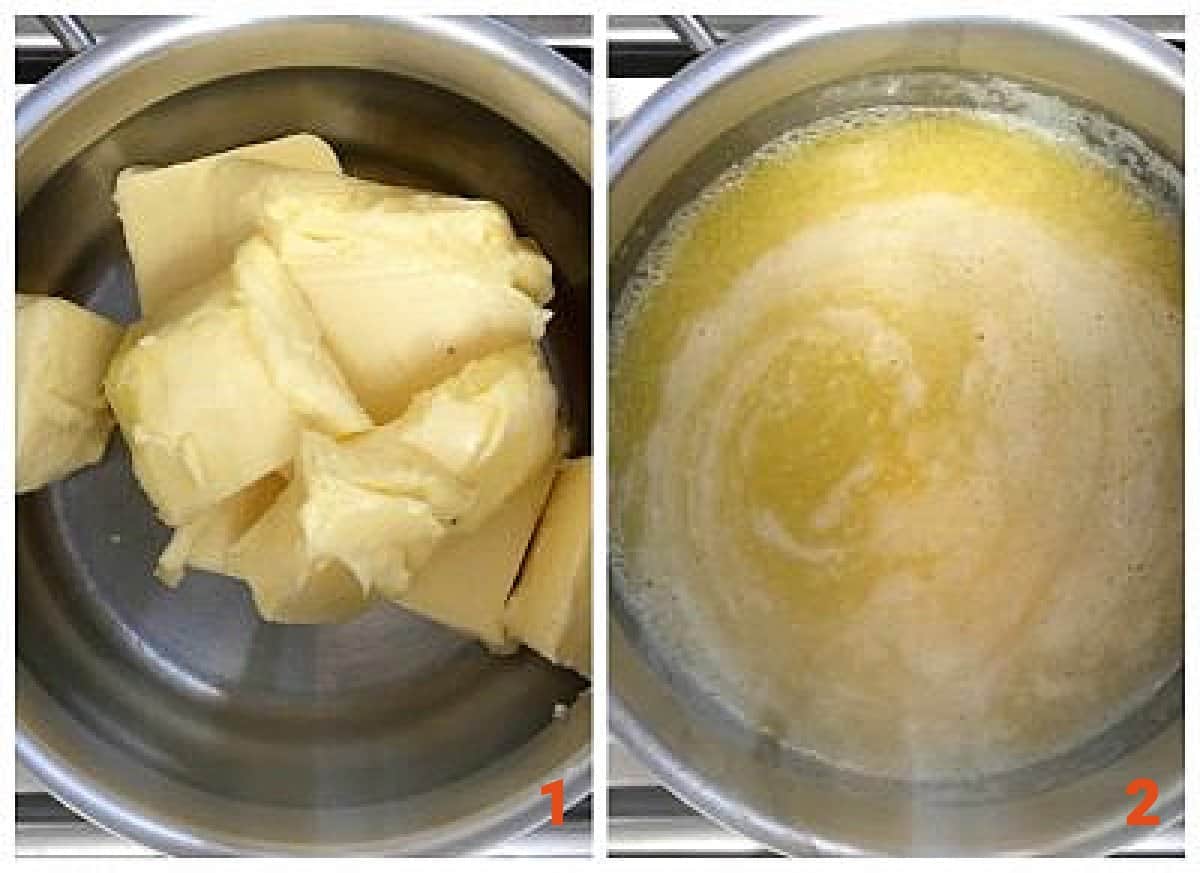
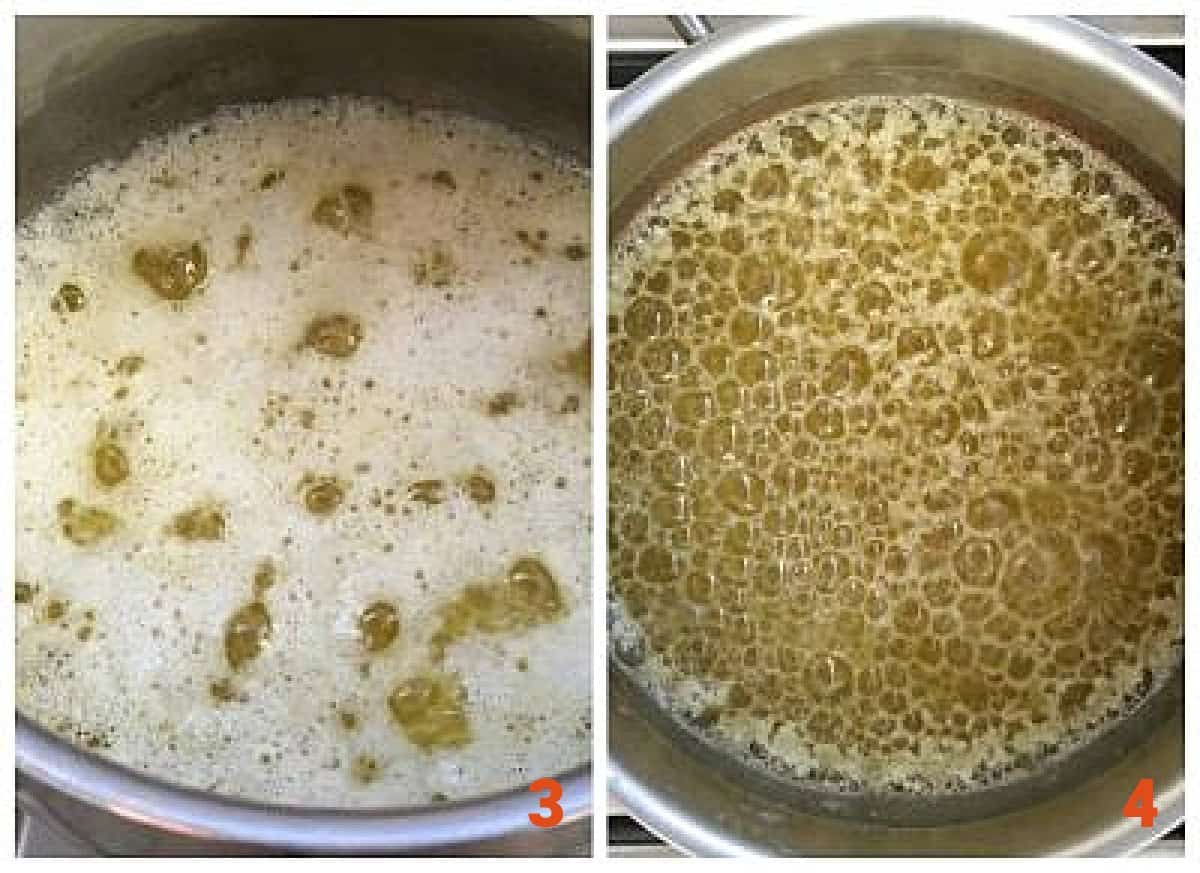
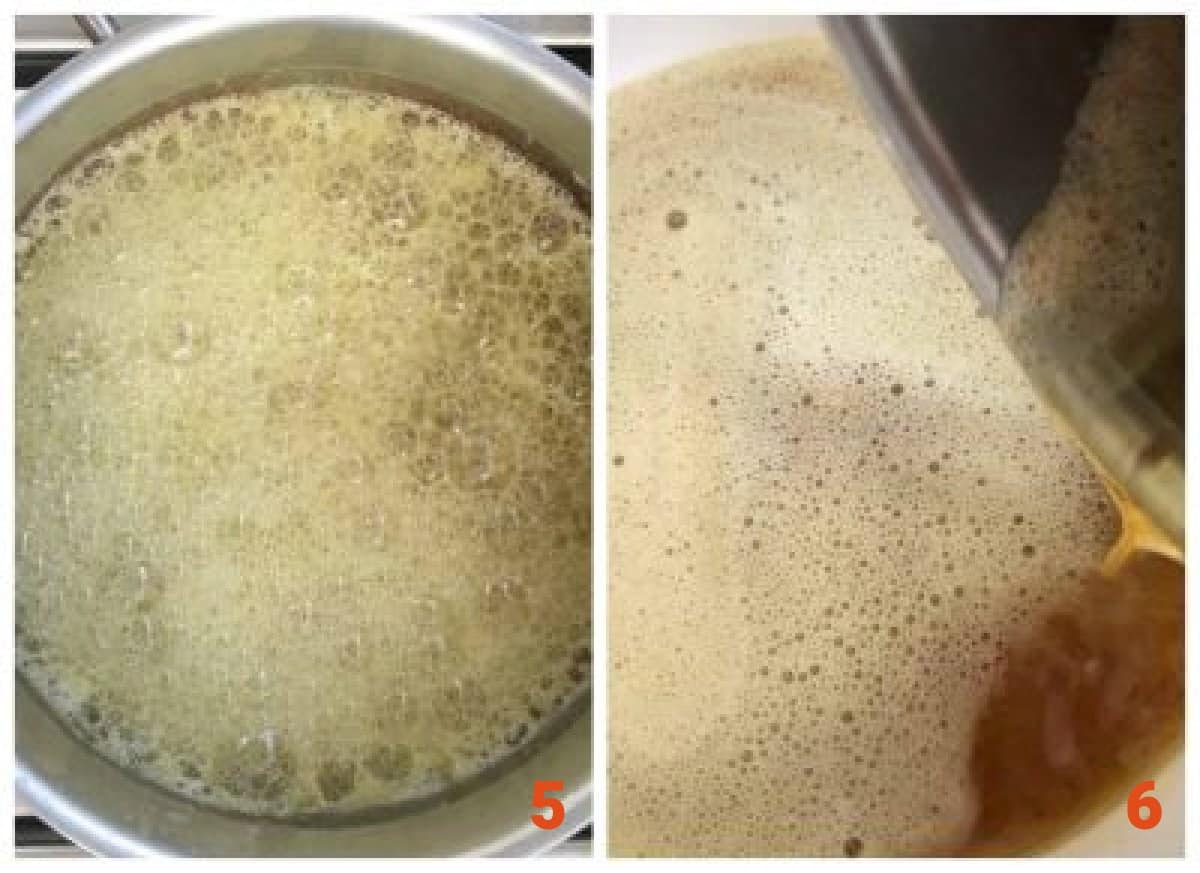
How deep should the brown color be
You want a light hazelnut or amber color (image below left).
The shade goes from light to dark in seconds, just like that (images below).
The flavor deepens as it colors, but be aware that, just as it happens with caramel, it goes from wonderfully dark-colored and deep flavored to burned, bitter, and useless.
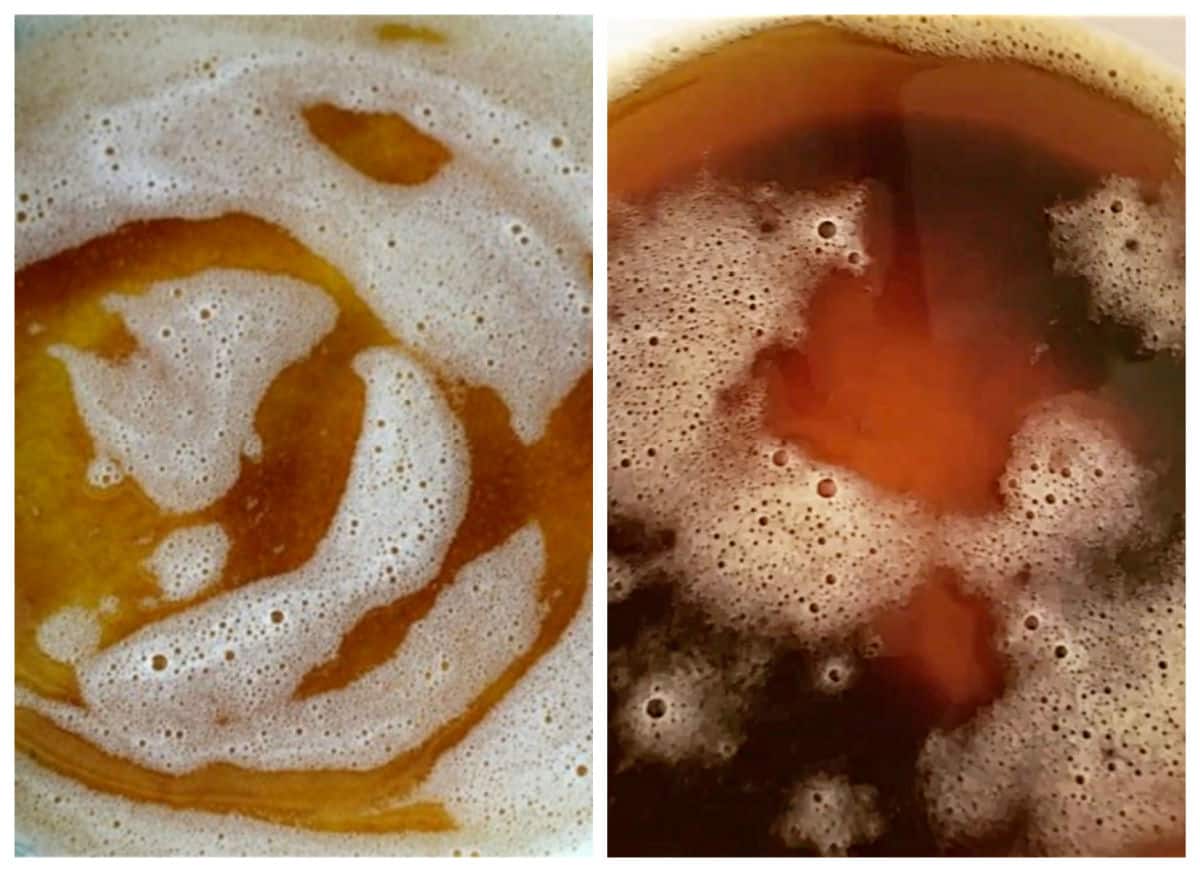
Brown butter at room temperature
It's softer than regular butter and bright yellow with brown specs that are the browned solids.
Even when you take it out of the refrigerator, it will be spreadable and unctuous.
It's easier to use in recipes because you don't have to wait until it's softened.
So here it is, your fabulous brown butter!
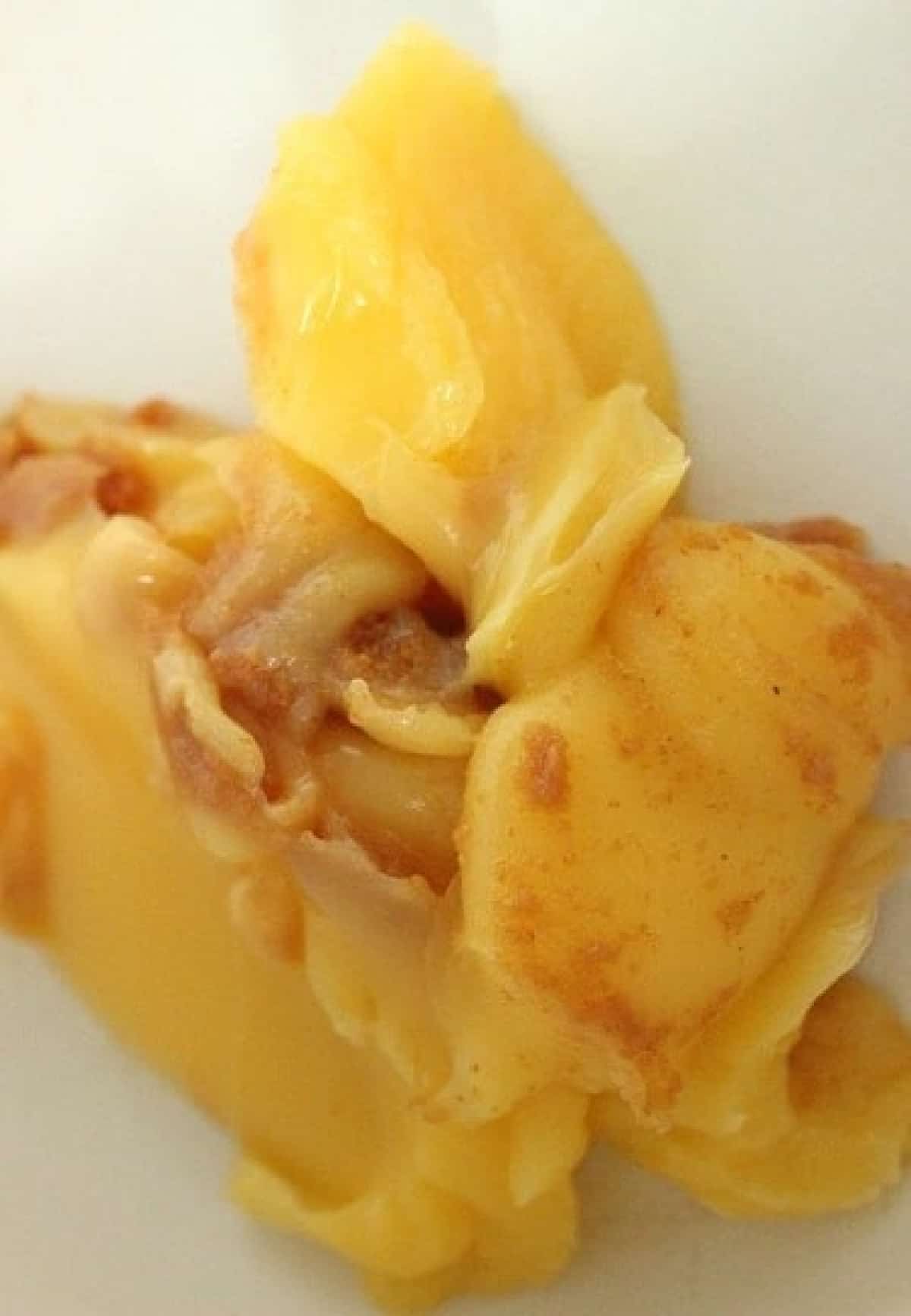
Kitchen notes
- Organization: read the recipe first and ensure you have ingredients at the correct temperature, equipment, and enough workspace. This will make the process so much easier.
- Color: be very careful during the last stage of the recipe, when the butter stops chirping, and a thick foam gathers on the top. The butter starts to burn quickly at this point, so make sure you separate the foam with a spatula and check that the bottom is not burning. The darker the color, the deeper the flavor. Just make sure you don't get a burned flavor!
- Solids: as the butter browns, the solids burn and deposit in the bottom. You can use it with solids or without. Your choice. Sometimes the butter is deep-colored, meaning the solids are almost burned, so it's better to leave them behind.
- Bulk browning: I make this recipe 1 pound at a time. Then I refrigerate it until I need it and use it as regular butter. It will have a different consistency, of course. But the results in cakes, muffins, and cookies are exceptional.
- Storing: keep refrigerated in a tightly closed container. It lasts for a week, but always check it before using it. Don't use it if it has a rancid smell or a weird texture. It can also be frozen. Thaw in the refrigerator.
- Soft brown butter: read the recipe you're going to make carefully because butter is usually used at room temperature, so it doesn’t need to solidify entirely if you're browning it for that recipe.
One last thing
If you made this recipe and loved it, you can comment below and leave a five-star ⭐️ review. Also, if you had issues, let me know so we can troubleshoot together. I appreciate honest feedback and suggestions.
You can also subscribe to our FREE email series 'Baking the Best' and our regular newsletter. Or follow and save my recipes on Pinterest.
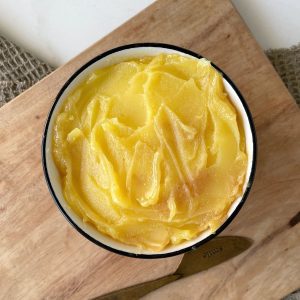
How to Brown Butter
Ingredients
- 1 pound unsalted butter
Instructions
- Melt butter in a medium saucepan with tall sides (a few inches or so depending on the amount of butter you're browning) over medium heat.
- It will foam at first and spurt, so be careful! Don't stand too close to the saucepan.
- It will melt and will start to bubble and make a furious noise (this will be louder depending on the amount of water the butter has).
- Then, the bubbles will become smaller and it will gradually stop chirping (really, it's a chirping noise, you'll see) and will foam quite a bit (images below).
- Be careful as it will start browning underneath the foam. You will smell a nutty aroma.
- It's very important that you split the foam with the spoon or spatula you're using and see that it doesn’t burn. You want it to be an amber color. Similar to caramel, it goes from amber to burned in a short moment, so be careful.
- Take it out and put it in a shallow pan so it stops cooking (image below, right).
- The shade goes from light to dark in seconds, just like that (image below). The flavor deepens as it colors, but be aware that, just like it happens with caramel, it goes from wonderfully dark-colored and deep flavored to burned and useless.
- Allow to cool and refrigerate until cold. Read the recipe carefully, because usually butter is used at room t°, so it doesn’t need to solidify completely.

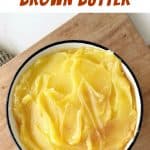
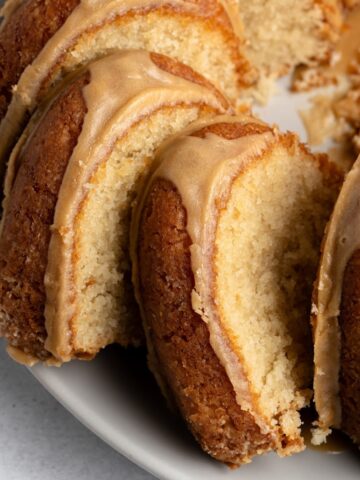
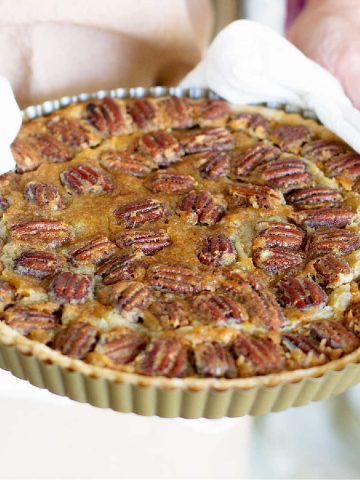
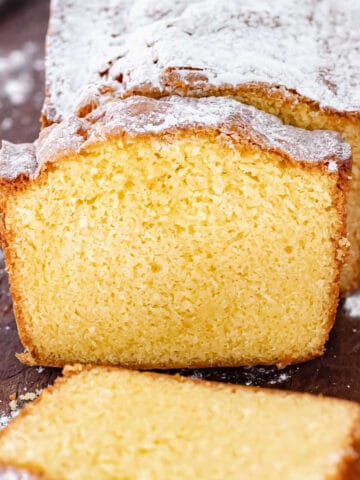
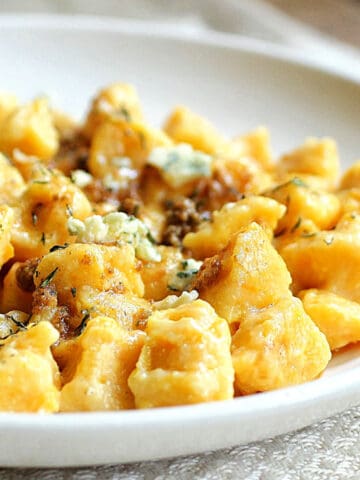
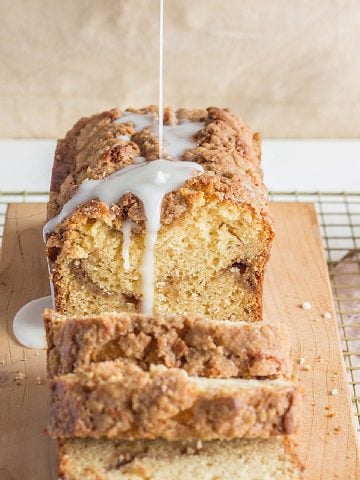
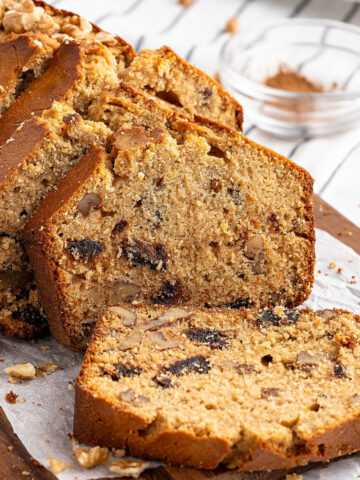
mark says
What's the difference between brown butter and ghee?
Paula Montenegro says
Hi Mark, ghee is clarified butter where you melt it and remove the solids. Brown butter is cooked until the solids are browned, giving it the color and nutty flavor. Ghee is a neutral flavor and, since the solids are removed, doesn't burn like regular or brown butter.